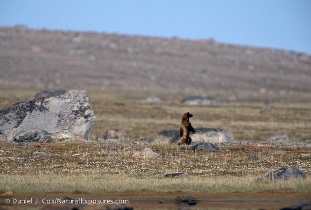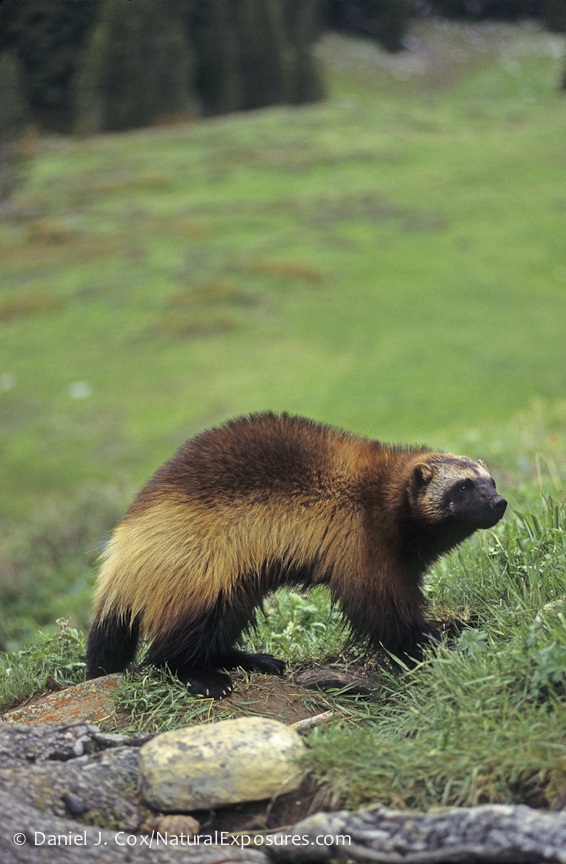Wolverine
Gulo gulo
Trevor Fink
Interactions
Being named for a "glutton," the
wolverine loves to eat. This carnivore will eat almost anything
it can sink its teeth into, and that doesn't exclude very much.
So it's no wonder that the wolverine is an opportunistic hunter,
killing any easy prey it comes across. They have been known to
kill animals like a sheep or a reindeer that has been stranded
in the snow, but they may not be able to eat all of the carcass.
Other times, wolverines are content with consuming any dead
animal they find. Wolverines often will scavenge the ocean
shoreline in search of any washed up whales,
walruses, or seals. When female wolverines are caring for their
young, they will hunt for smaller, easier game like rabbits, squirrels, eggs
and their favorite, lemmings.
Males, however, are readily capable of taking down moose, deer, sheep,
and elk
(Patsy 2009).
often will scavenge the ocean
shoreline in search of any washed up whales,
walruses, or seals. When female wolverines are caring for their
young, they will hunt for smaller, easier game like rabbits, squirrels, eggs
and their favorite, lemmings.
Males, however, are readily capable of taking down moose, deer, sheep,
and elk
(Patsy 2009).
Wolverines don't usually peacefully interact with other
organisms. Most often, a wolverine will interact with another
organism because it's actively hunting or feeding on an animal.
That being said, wolverines rarely interact with one another.
They even try to avoid each other by stretching out "their"
territory. Males can have a solitary territory of up to 250
square miles. Female wolverines have territories that might
reach 100 square miles. A male wolverine tries to encompass
several female wolverine territories within his own territory,
but adults of the same sex do not often overlap territories.
In fact, there has even been a study on the space usage and
territoriality of Gulo gulo. It unequivocally concluded
that male wolverines encompass a far more vast space than female
wolverines do. On average, researchers found that male
wolverines share a portion of their territory with five females,
but never another male. That supports the idea of intrasexual
tolerance and kinship (Persson 2010). An explanation for this
phenomenon is purely biological and goes back to Charles
Darwin's theory that only the strongest survive. Male wolverines
employ the tactic to stay away from other males so they don't
have to compete for mating and food resources, giving them a
stronger chance of not only survival, but also for reproduction
of its valued genes (Persson 2010).
This experiment was conducted in northern Scandinavia where
wolverines have a relatively high population. To observe a
wolverine in its territory, researchers used aerial views to
plot out different wolverine territories. To ensure that the
same wolverines were being watched, juveniles and adults were
implanted with tracking devices. These monitored wolverines were
watched over a time period of seven years (from 1993 to 2000).
The results were somewhat expected. The main reason for
additional overlapping of territories was because of mating
season (Persson 2010).
To hear about the spooky side of the Wolverine, go to
Spooky Story
Go back to my Home Page